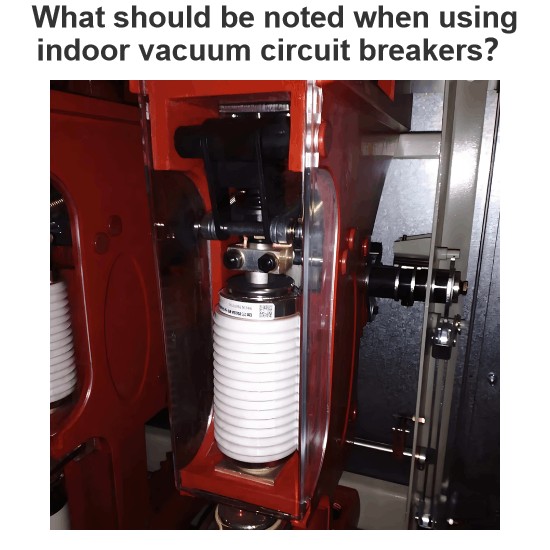What are the 3-phase MCB types?
Types of Three-Phase MCBs
Three-phase miniature circuit breakers (MCBs) can be classified into various types based on their pole configuration, tripping characteristics, rated current, and specific applications. Below is a detailed overview of the common types of three-phase MCBs:
1. Classification by Pole Configuration
3P (Three-Pole) MCB:
Application: Used in pure three-phase circuits without a neutral line (N). Suitable for applications like three-phase motors and industrial equipment where a neutral line is not required.
Operation: When a short circuit or overload occurs in any phase, all three phases trip simultaneously, ensuring the entire circuit is safely disconnected.
3P+N (Three-Pole Plus Neutral) MCB:
Application: Used in three-phase four-wire systems that include a neutral line. Suitable for environments where both three-phase and single-phase loads coexist, such as residential and commercial buildings with three-phase power supply.
Operation: The three-phase section provides short-circuit and overload protection, while the neutral line does not have a tripping function. However, when the main contacts trip, the neutral line is also disconnected to prevent it from remaining energized, which could pose a safety hazard.
4P (Four-Pole) MCB:
Application: Used in three-phase four-wire systems that include a neutral line. Suitable for applications requiring strict protection of the neutral line, such as sensitive equipment and medical devices.
Operation: A four-pole MCB provides short-circuit and overload protection for all three phases and the neutral line. If a fault occurs in any phase or the neutral line, all four poles trip simultaneously, ensuring the entire circuit is safely disconnected.
2. Classification by Tripping Characteristics
The tripping characteristics of an MCB determine its response time under different current multiples. Common tripping characteristic curves include:
B-Type: Trips at 3-5 times the rated current. Suitable for purely resistive loads and low-voltage lighting circuits, commonly used in residential distribution systems to protect household appliances and ensure personal safety.
C-Type: Trips at 5-10 times the rated current. Suitable for protecting distribution lines and circuits with higher inrush currents, such as lighting circuits and motor circuits. This is the most commonly used tripping characteristic for industrial and commercial applications.
D-Type: Trips at 10-20 times the rated current. Suitable for protecting equipment with very high inrush currents, such as transformers and solenoids. This type of MCB is ideal for circuits with large starting currents.
K-Type: Trips at 8-12 times the rated current. Suitable for inductive loads and motor circuits with high surge currents. It is used to protect and control transformers, auxiliary circuits, and motors from short circuits and overloads.
Z-Type (or A-Type): Trips at 2-3 times the rated current. Less commonly used, typically for semiconductor protection or other specialized applications.
3. Classification by Rated Current
The rated current of a three-phase MCB typically ranges from 10A to 63A or higher, depending on the application. Common rated current specifications include:
10A
16A
20A
25A
32A
40A
50A
63A
4. Classification by Application
General Purpose MCB: Suitable for short-circuit and overload protection in ordinary residential, commercial, and industrial environments.
Residual Current Circuit Breaker with Overcurrent Protection (RCBO): In addition to short-circuit and overload protection, RCBOs provide residual current (leakage current) protection. They quickly disconnect the circuit when the leakage current exceeds a set value, ensuring personnel safety. Suitable for damp environments, kitchens, bathrooms, and other areas where electrical safety is critical.
Current-Limiting MCB: This type of MCB limits the rate of current rise during a short circuit, reducing the damage to the circuit and equipment. Suitable for applications where short-circuit currents must be strictly controlled.
5. Classification by Installation Method
DIN Rail Mounting: The most common installation method, suitable for distribution boards and switchgear. DIN rail-mounted MCBs can be quickly inserted and removed, making maintenance and replacement easy.
Panel Mounting: Suitable for applications where the MCB needs to be mounted on a panel, such as control cabinets and operator stations.
Summary
The selection of a three-phase MCB should be based on specific circuit requirements, load type, current rating, and protection needs. Common types of three-phase MCBs include 3P, 3P+N, and 4P, with tripping characteristics such as B, C, D, K, and Z. Rated current ranges from 10A to 63A. Additionally, MCBs can be chosen based on whether they require residual current protection, current-limiting functionality, or other special features.
The Electricity Encyclopedia is dedicated to accelerating the dissemination and application of electricity knowledge and adding impetus to the development and innovation of the electricity industry.













